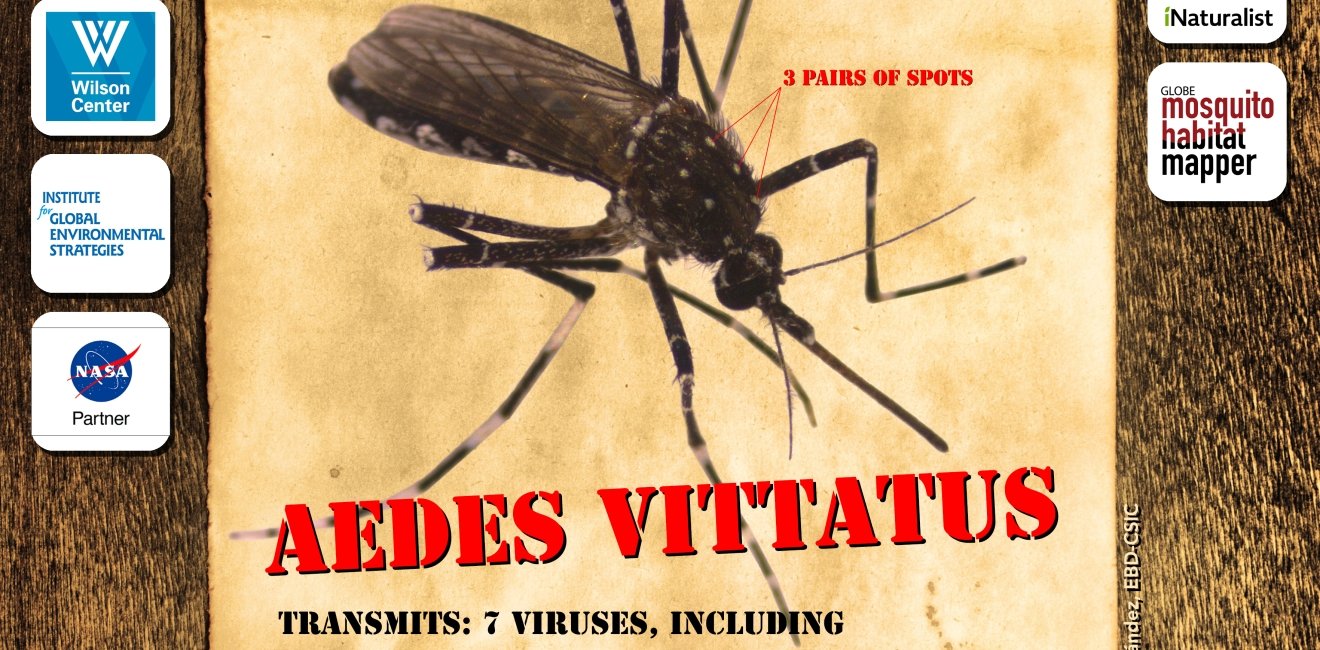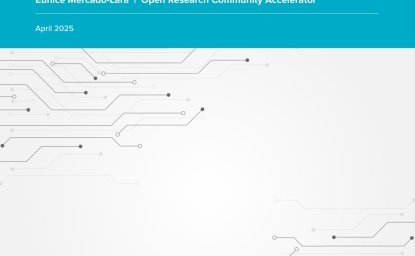PRESS RELEASE
Contact: Ryan McKenna
Phone: (202) 691-4217
Everyday people can use their smartphones to help track the most dangerous animal alive–the mosquito.
Mosquito populations are traditionally tracked through specimens found in traps, then identified by expert entomologists or DNA analysis. But these surveillance methods take time, and are hard to scale. A new project led by the University of South Florida in partnership with the Woodrow Wilson International Center for Scholars' Science and Technology Innovation Program (STIP), The Institute for Global Environmental Strategies (IGES), and Centers for Disease Control and Prevention (CDC), seeks to develop a better solution.
"Citizen" or "community" science-related processes, where members of the public contribute to scientific research, can get more eyes on the environment to find new vectors and invasives as soon as they appear. And new advances in artificial intelligence (AI) can also help. Research led by Dr. Ryan Carney (Integrative Biology) and Dr. Sriram Chellappan (Computer Science and Engineering) at the University of South Florida and supported by the U.S. National Science Foundation, will create a platform for large-scale, automated identification of mosquito species, leveraging the power of citizen science and AI for mosquito surveillance and control.
According to Dr. Anne Bowser, Deputy Director of STIP, "Many people theorize about how citizen science, Earth observation, and machine learning can bring real advances in environmental monitoring and governance. This project takes theory and puts it into practice."
The team is looking for disease vectors such as Aedes aegypti, which was the main culprit of Zika outbreaks in Florida and worldwide, as well as newly invasive species. These include Aedes scapularis, a vector of yellow fever identified last year in Florida, and Aedes vittatus, which also carries Zika, dengue, and West Nile virus, and has now invaded nearby Cuba and the Dominican Republic.
And with a tool as simple as a smartphone, people from across the Americas–and especially Florida and the Caribbean–can join the effort to track these invasives and disease vectors today. Volunteers can contribute by downloading one of three citizen science mobile apps:
- Mosquito Alert to monitor adult mosquitoes via photographs, as well as monitor bites and breeding grounds; an expert-validated system coordinated by several research institutions in Spain (CEAB-CSIC, CREAF, ICREAUPF);
- iNaturalist to monitor larval or adult mosquitoes via photographs; a social platform for sharing biodiversity observations, and a joint initiative of the California Academy of Sciences and National Geographic Society, used by thousands of organizations and researchers;
- GLOBE Observer: Mosquito Habitat Mapper to monitor larval mosquitoes and habitats via photographs; supported by NASA through the GLOBE Program.
Citizen scientists using the GLOBE Observer Mosquito Habitat Mapper not only describe and locate mosquito larval habitats, which helps scientists to understand the spatial distribution of breeding sites, they also participate in source reduction. This includes removing standing water habitats from use, which also reduces the risk of disease within neighborhoods, supporting both community health and environmental justice.
According to Dr. Russanne Low, IGES, "Citizen scientists are the link between mosquitoes and NASA’s Earth Observing Mission. Scientists can’t see mosquitoes from space, but they can identify the environmental conditions that foster mosquito population growth and vector-borne disease outbreaks. Citizen scientists on the ground provide data about mosquitoes and habitats that enhance our understanding of population response and improve the effectiveness of predictive models linking weather and climate to disease outbreaks."
Dr. Durrell D. Kapan from the California Academy of Sciences, who has worked on community science for mosquitoes using the iNaturalist platform since 2015, says "This project can act as an 'expertise' multiplier. In our experience, iNaturalist users learn from each other as well as expert entomologists and apply this knowledge to curate the identifications in the database and share their knowledge to other iNat users encountering the same species worldwide. The outcome is over 43,000 identified mosquito images that can help train deep learning AI algorithms."
Says Dr. Carney, "Data from each of these apps, analyzed by our AI running behind the scenes, enables the public to become 'citizen epidemiologists' that can contribute to cutting-edge scientific research and public health in meaningful and engaging ways." The data will be shared with health authorities and partner organizations across Florida and surrounding areas, and made available for other researchers and citizen scientists, including:
- University of South Florida
- The Wilson Center's Science and Technology Innovation Program (STIP)
- GLOBE Observer Mosquito Habitat Mapper, including through the Institute for Global Environmental Strategies (IGES)
- Mosquito Alert, coordinated by the Ecological and Forestry Applications Research Centre (CREAF), Universitat Pompeu Fabra (UPF), Catalan Institution for Research and Advanced Studies (ICREA), and Center for Advanced Studies of Blanes (CEAB-CSIC)
- iNaturalist, a joint initiative of the California Academy of Sciences and the National Geographic Society
- The Centers for Disease and Control and Prevention (CDC)
- The National Science Foundation (NSF)
- The U.S. Department of State

Science and Technology Innovation Program
The Science and Technology Innovation Program (STIP) serves as the bridge between technologists, policymakers, industry, and global stakeholders. Read more

Explore More
Browse Insights & Analysis
360° View of How Southeast Asia Can Attract More FDI in Chips and AI





